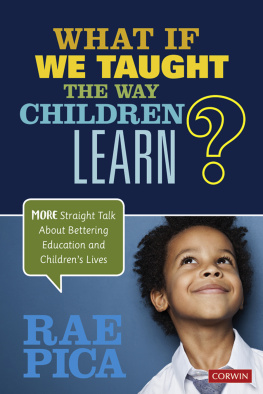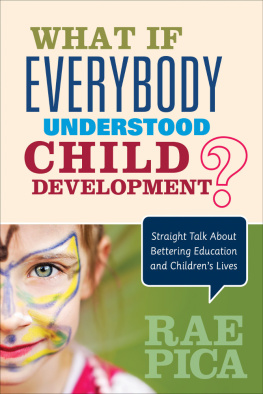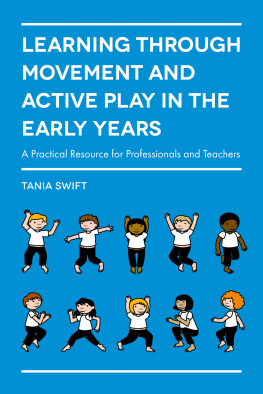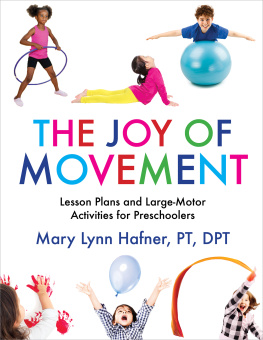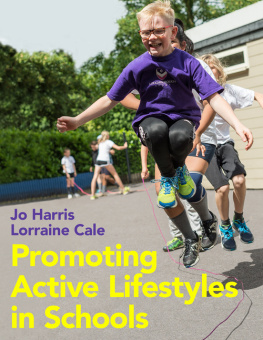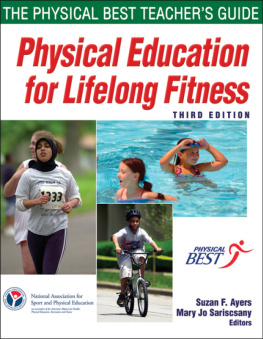

Published by Redleaf Press
10 Yorkton Court
St. Paul, MN 55117
www.redleafpress.org
2014 by Rae Pica
All rights reserved. Unless otherwise noted on a specific page, no portion of this publication may be reproduced or transmitted in any form or by any means, electronic or mechanical, including photocopying, recording, or capturing on any information storage and retrieval system, without permission in writing from the publisher, except by a reviewer, who may quote brief passages in a critical article or review to be printed in a magazine or newspaper, or electronically transmitted on radio, television, or the Internet.
First edition 2014
Cover design by Ryan Scheife, Mayfly Design
Cover artwork composed from images: (empty room) ssstep/iStockphoto; (watercolor circles abstract and colored spots) crisserbug/iStockphoto; (child gestures) tompet80/iStockphoto
Interior design by Ryan Scheife, Mayfly Design
Typeset in Kepler MM
Interior illustrations by Chris Wold Dyrud
Guidelines on pages 1112 are from Active Start: A Statement of Physical Activity Guidelines for Children from Birth to Age 5, 2nd ed., by the American Alliance for Health, Physical Education, Recreation and Dance (AAHPERD) (Reston, VA: AAHPERD, 2009). Reprinted with permission.
Excerpts on page 13 are from Developmentally Appropriate Practice in Early Childhood Programs Serving Children from Birth through Age 8, a position statement by National Association for the Education of Young Children (NAEYC). Copyright 2009 NAEYC. www.naeyc.org/files/naeyc/file/positions/PSDAP.pdf. Reprinted with permission.
Excerpts on pages 1213 are from NAEYC Standards for Early Childhood Professional Preparation Programs, a position statement by NAEYC. Copyright 2009 NAEYC. http://www.naeyc.org/files/naeyc/file/positions/ProfPrepStandards09.pdf. Reprinted with permission.
Library of Congress Cataloging-in-Publication Data
Pica, Rae, 1953-
[Preschoolers and kindergartners moving and learning]
Preschoolers & kindergartners moving & learning / Rae Pica.
pages cm
Summary: Physical education is a critical part of the early childhood curriculum, and it helps children develop lifelong love for fitness and healthy habits. This movement program includes standards-based lesson plans with many fun activities Provided by publisher.
Includes bibliographical references.
ISBN 978-1-60554-271-3 (e-book)
1. Movement educationStudy and teaching (Elementary) 2. Early childhood educationActivity programs. 3. Physical fitness for children. I. Title.
GV452.P5197 2014
372.86'8dc23
2013031260
The three books in the Moving & Learning series are dedicated to my angel, Fredrick Davis.
He knows why.
Contents
I couldnt be happier that the Moving & Learning series is finding a home at Redleaf Press. Its become clear to me that this is where these books belong. Id like to thank Kyra Ostendorf and David Heath for the warm welcome, with extra-special thanks to David for being a fabulous editor. Working with you was such a pleasure!
Im forever grateful to Richard Gardzina for the original music that accompanies these curriculum packages. He is a remarkable composer, and what I especially love about what he created here is that he never considered it childrens music. Instead, he set out to compose and perform the best music he could.
Special thanks to the children and teachers with whom Ive worked over the yearsthose on whom I practiced and those whove embraced the movement message at my presentations. Your enthusiasm, along with your expressions of appreciation over the years, has kept me going!
Deep appreciation to my mom, whose pride in me warms my heart.



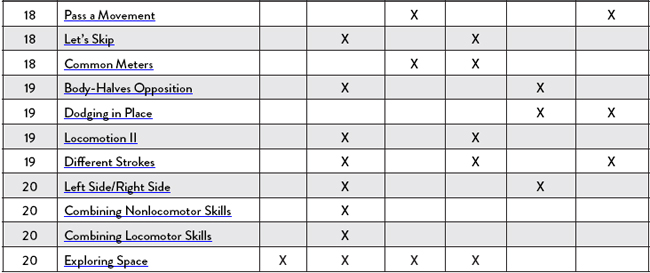


Welcome to the Moving & Learning family! The movement program in your hands, Preschoolers & Kindergartners, is being used in schools, child care settings, recreation centers, and gymnastic centers throughout the United States and in several other countries.
The program consists of twenty lesson plans, with four activities per plan (not including extensions). Each lesson is intended to take approximately forty-five minutes to complete. (Alternatives are discussed later, under Implementing the Program.) The twenty lessons and their activities have been arranged in a developmental progression, from least to most challenging, with each lesson plan consisting of one body-parts activity, one nonlocomotor activity, one locomotor skill experience, and one activity exploring an element of movement.
The lessons begin with simple body-part identification, which is the basis of any movement experience. The lessons also begin with the simplest locomotor skills (movements that transport the body from one place to another) of walking and running. (Technically, crawling and creeping are the simplest, but the exploration of these skills has been incorporated later, in order to promote a feeling of maturity among the children.) The simplest nonlocomotor skills (movements performed while remaining in one place) of bending and stretching are also found in early lessons, along with the simplest movement elements of space and shape.
If you start at the beginning and progress in a logical, developmental manner, you can expect greater success from children who are encouraged to build upon their earlier successes as stepping stones. You can also expect greater response from them as well. The idea is to make the children feel good about experiencing movementby starting slowly and providing them with frequent opportunities to experience success. If children are asked to respond to challenges that they could not possibly be comfortable with or are not prepared for, the result is intimidation and a lot of blank stares. No wonderthat would be comparable to asking a fledgling ballet student to perform a perfectly executed tour en lair (turn in the air) without first acquainting her or him with the basic balletic skills!
Children need opportunities to explore movement on their own, to find and use their own personal rhythms, so not all of the activities in this book are accompanied by music. However, children do love musicand it does contribute much to movement experiencesso it is included wherever it can make a contribution to the learning experience. The songs that are part of this program are almost entirely original, having been written specifically for the activities they accompany. (Activities using music have been marked with a musical note: 
Next page

